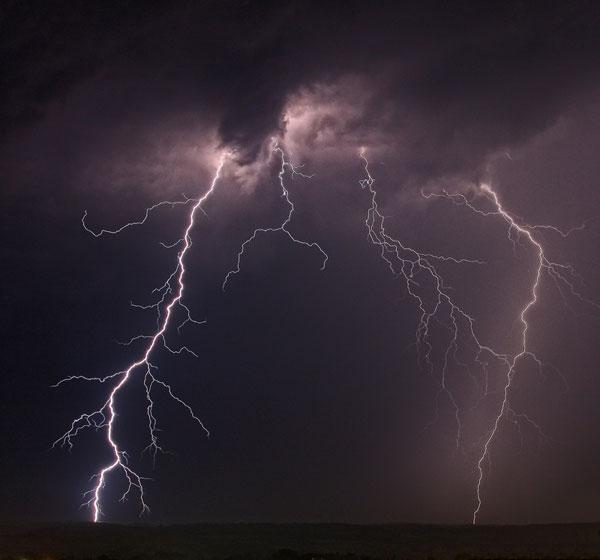Telescope Gets Better View of Strange Thunderstorm Flashes

The thunderstorms that rumble across Earth's surface bringing startling flashes of lightning also produce a more mysterious burst of energy in the form of gamma rays. More of the strange flashes are now being detected thanks to recent improvements to a NASA satellite.
The improved detection is also giving scientists a better idea of what causes the perplexing phenomenon.
The high-energy outbursts that occur above thunderstorms are known as terrestrial gamma-ray flashes (TGFs) and they last only a few thousandths of a second. But even in that brief flash, they rank among the highest-energy forms of light that occur naturally on Earth, according to a NASA release.
TGFs are detected from orbit by the Gamma-ray Burst Monitor (GBM) aboard NASA's Fermi Gamma-ray Space Telescope, which was recently upgraded and is now 10 times better at catching the phenomenon.
Previously, the GBM only detected the brightest flashes, which would trigger its on-board system.
"In mid-2010, we began testing a mode where the GBM directly downloads full-resolution gamma-ray data even when there is no on-board trigger, and this allowed us to locate many faint TGFs we had been missing," said lead researcher Valerie Connaughton, a member of the GBM team at the University of Alabama in Huntsville (UAH).
The satellite spotted 601 TGFs between August 2008 and August 2011, with 409 of those coming from the use of the new technique.
Get the Space.com Newsletter
Breaking space news, the latest updates on rocket launches, skywatching events and more!
The results of the trial, presented last week at the annual meeting of the American Geophysical Union in San Francisco, were so impressive that the team uploaded new software onto the satellite on Nov. 26 that would keep the instrument operating in the new mode continuously. With the new mode online, the team estimates they will catch about 850 TGFs each year, NASA said, though that is only a fraction of the 1,100 TGFs the team estimates occur each day. [The World's Weirdest Weather]
To learn more about what causes the gamma-ray flashes, the GBM team compared the new TGF data with signals of very low frequency (VLF) radio waves emitted by lightning (this is often heard as popping and crackling on an AM radio).
Scientists had thought that the radio waves were emitted by strokes of lightning that were themselves somehow associated with the TGFs, according to the NASA release, but the GBM comparison found that the radio emissions occurred nearly simultaneously with the TGF, said team member Michael Briggs.
The TGFs are thought to be generated by strong electrical fields at the top of thunderstorms. Certain conditions cause the fields to become strong enough that they send a rush of electrons upward, which then interact with air molecules and give off the gamma rays. That rush could also be the source of the radio emissions.
"This gives us a new window into understanding this phenomenon," study team member Joseph Dwyer, a physics professor at the Florida Institute of Technology in Melbourne, Fla., said in a statement.
The team hopes to use this relationship, along with new data from Fermi and lightning radio signals observed from Earth, to get a clearer picture of where TGFs occur and what kinds of storms produce them.
Reach Andrea Thompson at athompson@techmedianetwork.com and follow her on twitter @AndreaTOAP.Follow OurAmazingPlanet on Twitter @OAPlanet. We're also on Facebook and Google+.
Join our Space Forums to keep talking space on the latest missions, night sky and more! And if you have a news tip, correction or comment, let us know at: community@space.com.

Andrea Thompson is an associate editor at Scientific American, where she covers sustainability, energy and the environment. Prior to that, she was a senior writer covering climate science at Climate Central and a reporter and editor at Live Science, where she primarily covered Earth science and the environment. She holds a graduate degree in science health and environmental reporting from New York University, as well as a bachelor of science and and masters of science in atmospheric chemistry from the Georgia Institute of Technology.










